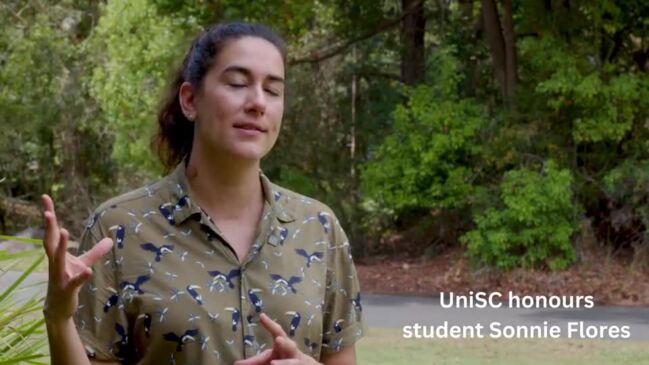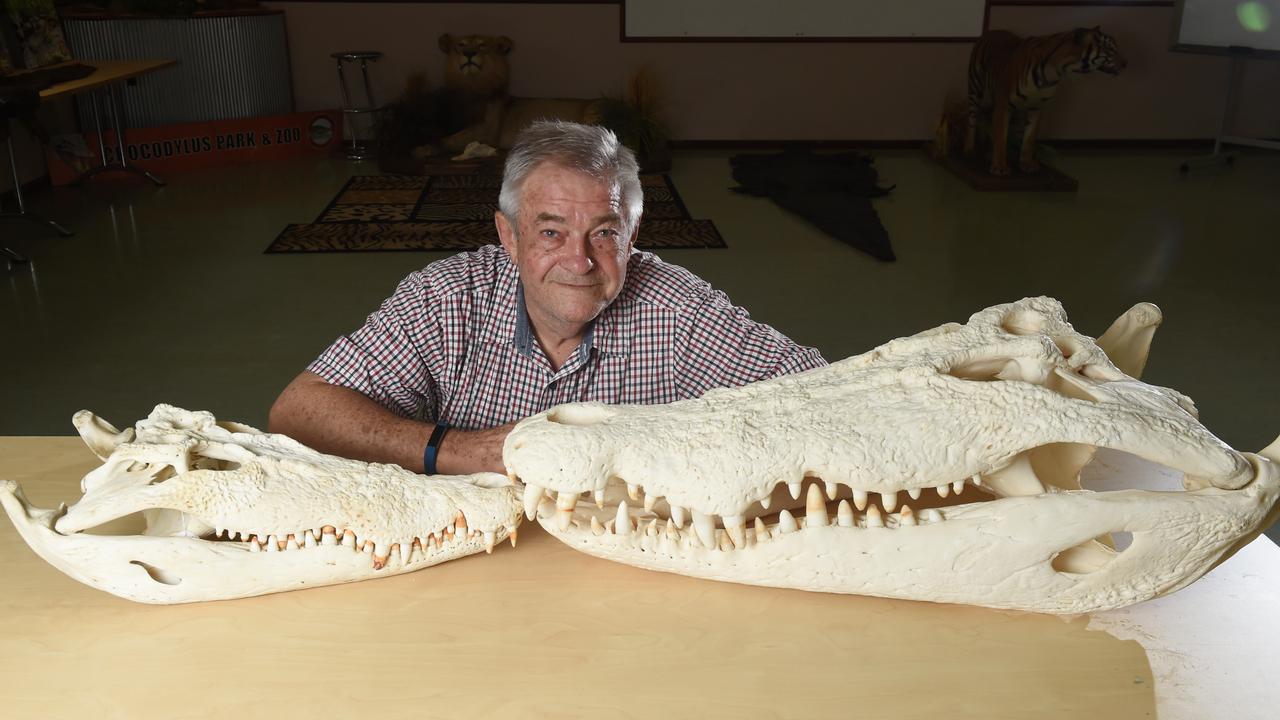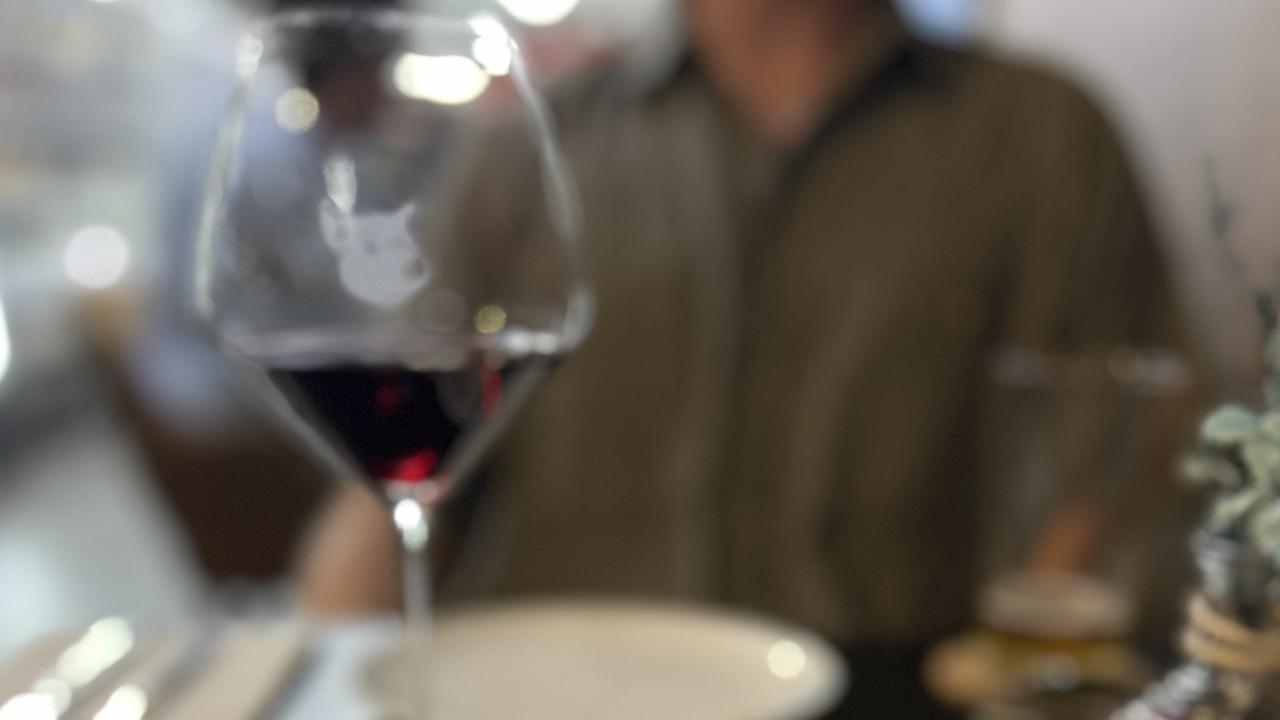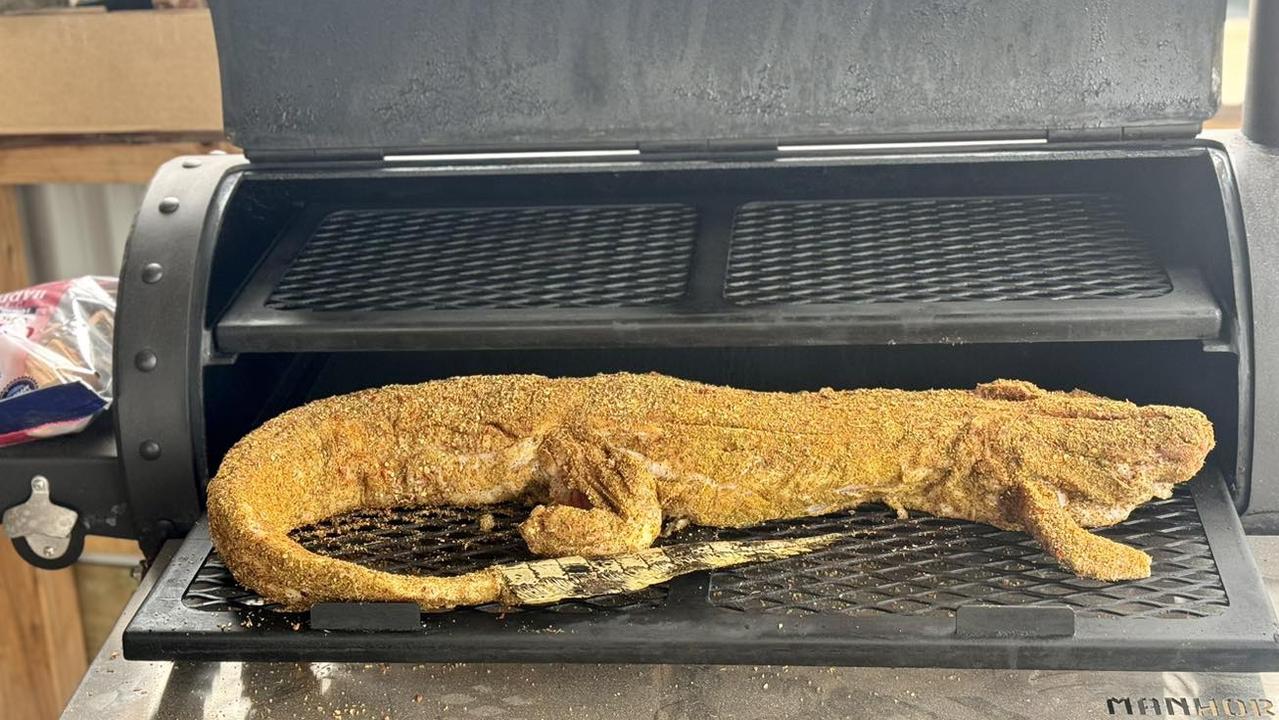NT expert Prof Grahame Webb claims not much new in UniSC research on crocodile love language
Renowned Northern Territory croc expert, Professor Grahame Webb, claims there is little new in the idea of a “crocodile dictionary” after a recent research project garnered mass media coverage.

The Northern Territory’s resident crocodile expert has poured cold water on the idea of a sudden breakthrough in humankind’s understanding of how males woo females, saying the behaviours identified in a recent honours thesis have been known to experts for decades.
On Tuesday, the NT News reported that a new University of the Sunshine Coast thesis by Sonnie Flores found that narial geysering (spouting water from the nose) and bubble-blowing is a key step in a male croc’s attempts to win the heart of his reptilian bride.
“There’s a lot of courtship noises, and a lot of the sounds they make are actually in mixed context. So they might make it in an aggressive way, or in a courtship way,” Ms Flores said.
Ms Flores’ 12-month bid to build a “crocodile dictionary,” using video and acoustic recording equipment installed in Australia Zoo’s crocodile habitats, received wide media coverage.
However, Crocodylus Park founder Professor Grahame Webb told the NT News on Friday there appeared to be little new in the research.

“These behaviours associated with mating are all well known among world crocodilians (including saltwater crocodiles), and have been documented in detail since the 1970s,” he said.
“They were reviewed in depth by Dr Jeffrey Lang in ‘Wildlife Management: Crocodiles and Alligators’, published in 1987, which is still something of an international bible.”
In Dr Lang’s chapter of the book, he wrote that male and female crocodiles “engage in a variety of species-specific behaviours... during pair formation and precopulatory activity”.
They included “snout contact, snout-lifting, head and body rubbing and riding, conspicuous male displays, vocalisation, exhalations, narial and guttural bubbling, circling and periodic submergence and re-emergence”.
In 1989, in a chapter of Crocodiles and Alligators edited by C.A. Ross, Dr Lang noted the same as Ms Flores – that crocodile behaviours could mean different things in different contexts.
“Each species’ repertoire is composed of three types of signals: discrete signals that do not vary, graded signals that vary according to the situation, and complex signals, that is, displays that are composites of vocal, acoustic and visual elements,” Dr Lang wrote.

In the UniSC statement announcing Ms Flores’ research, Australia Zoo’s crocodile research team leader, Toby Millyard, said the 12-month project dovetailed with zoo founder Steve Irwin’s “commitment to breaking down the stigma surrounding the iconic Australian species”.
“Scientific programs like acoustic recordings help paint a fuller picture of crocodiles – not just as these mindless, evil monsters,” Mr Millyard said.
“People are never going to love an animal they don’t understand.”
Prof Webb claimed there were dangers in anthropomorphising crocodiles too much.
“Australia Zoo... is forever trying to humanise crocodiles, in the hope of building public and political opposition to the types of management needed in North Queensland and operating in the NT for the last 45 years, which involves farming,” he said.
I’ve croc my eye on you: How to know if a crocodile is in love
Earlier, January 9: Spraying water through the nose is not a conventionally romantic way to woo a loved one.
But Queensland researchers have found narial geysering and bubble-blowing is a key step in a male croc’s attempts to win the heart of his reptilian bride.
University of the Sunshine Coast honours student Sonnie Flores was analysing crocodiles’ love languages and said “the females just love it”.
“There’s a lot of courtship noises, and a lot of the sounds they make are actually in mixed context,” Ms Flores said.
“So they might make it in an aggressive way, or in a courtship way.”

Ms Flores said her research – supervised by UniSC ecologist Dr Ross Dwyer – involved recording the sounds crocs made alongside the context they occurred in.
To date, Ms Flores has recorded narial hissing and mouth hissing – the latter of which she believed to be a “nest defence vocalisation”.
“We look at the video, see when there is an interaction or a vocalisation that we can hear on the video, and we look at that time on the acoustic recorder,” she said.
“We really have only just touched the tip of the iceberg of what we know about crocodile communication between each other.
“What we’re finding is that crocodiles might be a bit more social and a bit more tolerant of others than we originally thought.”

Dr Dwyer said a noisy trip to Cape York sparked the idea for a “crocodile dictionary”.
“When we were camping near the water in Cape York, you’d often hear these commotions down by the riverside – these big slaps, these growls and these hisses,” he said.
“And we found it’s the crocodiles making these calls.
“We did a bit of digging and realised that very little is known about how saltwater crocodiles communicate, which is when we came to Australia Zoo with the aim of trying to understand how and why they do it.”




